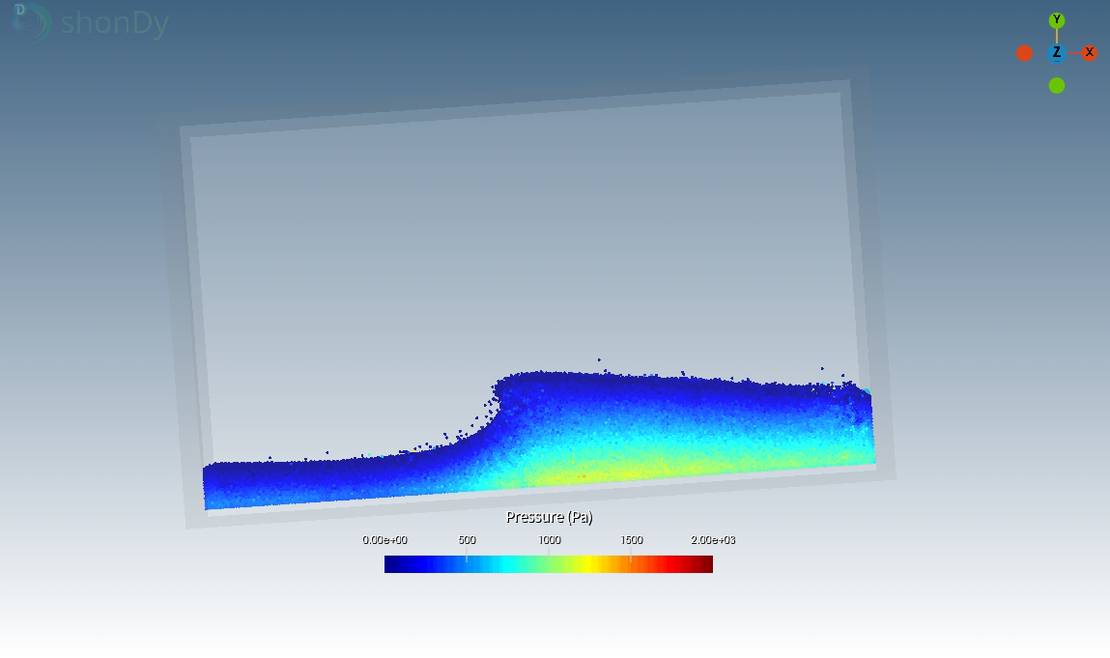罐内液体晃荡(Tank sloshing) 是指容器内液体因容器运动而产生的晃动现象。 这一现象在船舶和汽车等行业中十分常见,分别涉及船舶上的液化天然气(LNG)储罐和车辆中的燃油箱。 当液体在容器内移动时,晃荡会产生动态力作用于容器壁。
实验
下图展示了几何布局。 如下图所示,水箱的尺寸为 0.9 x 0.508 米,旋转中心固定在 x = 0.45 米处,绕 Z 轴旋转。 在实验中,压力在6个位置进行采样,而在报告中,只使用1个传感器,其位置如图中绿点所示。 该图展示了随时间变化的角速度。 关于试验的详细描述,可查阅Delorme et al.。


模拟设置描述
建立了一个双向模拟模型。 流体区域使用等温流体进行模拟。 压力样品位于模拟域中,与实验中的传感器 1 位于同一位置 该样品的压力读数稍后将用于比较模拟和实验获得的压力值 The liquid height at the beginning is 93 mm. 粒子半径定义为 0.002 m,总共有 5175 个粒子。 重力作用在负 y 方向上,大小为 -9.8 m/s²。 下表详细介绍了仿真中使用的所有求解器控件。
| 参数 | 值 |
|---|---|
| 结束时间 | 8.3 秒 |
| 粒子半径 | 0.002 米 |
| 密度流体 | 998 kg/m3 |
| 运动粘度 | 0.896E-6 m2/s |
| 重力 | 9.81 m/s2 |
模拟结果与实验的比较
传感器1上的压力读数与实验中的模拟结果进行了比较。 A first look at the pressure distribution in belows video shows the movement the fluid undergoes during the rotation of the tank. 压力是平滑分布的。 图中显示了Delorme 等人 实验得出的瞬态压力值与 shonDy 模拟结果的对比。 它显示了 5 次压力冲击,而其中 4 次的压力峰值又急又高。 The time of the pressure rise is captured perfectly by the simulation. However, evaluating the pressure magnitude is challenging. The pressure peaks are extremely sharp, making them difficult to capture accurately in the simulation and probably also in experiments. Overall, it can be still said that the pressure peaks are quantitatively captured well, with an underprediction of the first and slight overprediction of last peaks. Also the development of the pressure directly after the impact are captured very well, quantitatively and also in terms of time.



